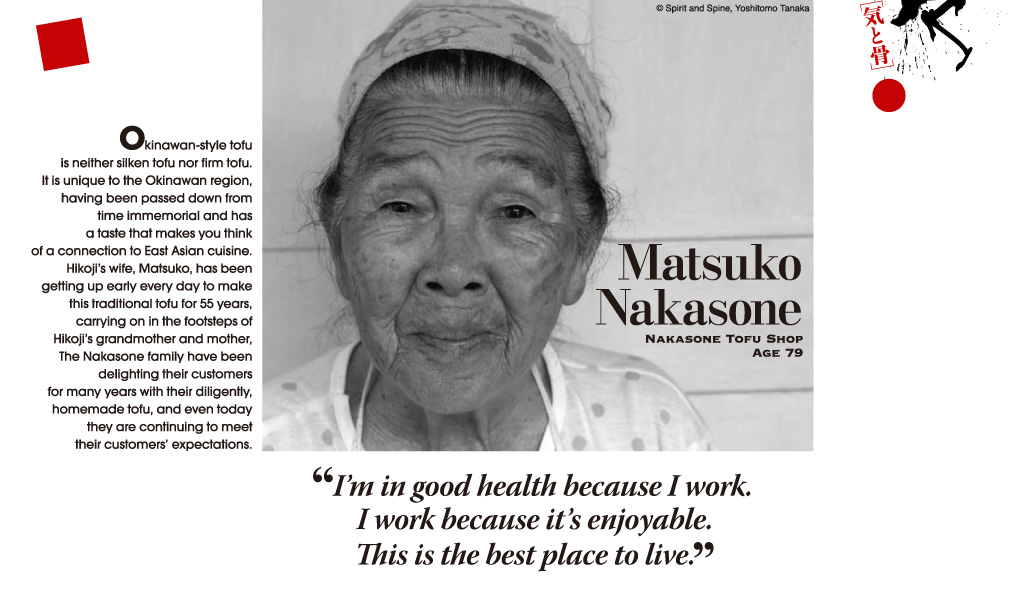For generations, they’ve drawn water from a well, used a millstone to grind up the island’s soybeans, simmered it on a firewood stove and added in sea water. The hardworking women’s Okinawan-style tofu is full of history.
It’s before dawn on Ishigaki Island. Matsuko starts making tofu at five o’clock in the morning. She crushes and presses the beans, simmers it on a stove and adds nigari (a traditional solidifier) and salt to flavor it. No coagulants or preservatives are added. Her small body moves briskly as she easily carries around the heavy bucket. When it’s finished cooking on the stove the warm food just beginning to harden is “yushi tofu.” The freshly made tofu is full of nutrition and has a gentle flavor. She then packs it tightly into wooden frames over and over again. The stone weight is the millstone that was used by her mother-in-law in the generation before. The finished tofu has a firm texture and a smooth, mild taste.
Okinawan-style tofu is an essential part of Okinawan food, which is represented by such dishes as chanpuru. It’s also an indispensable part of the couple’s breakfast meal. At eleven o’ clock, Matsuko starts her delivery round to their customers on her bicycle. Since he’s retired from his company, Hikoji helps out making the tofu and is in charge of cleaning the workplace and maintaining the machinery.
In the Battle of Okinawa, of the over 200,000 Japanese and American war dead, around 150,000 of them were private citizens. At that time, he was evacuated to Taiwan. Matsuko was nine years old, and she went into hiding from both the American military and the Japanese soldiers in the northern part of the main island. After the war she lost her family due to malaria and food shortages. During the 27 years they were under occupation, they needed a passport to visit relatives in Osaka. Even after Okinawa was returned to Japan, tofu was priced in both cents and yen at the same time.
Nationwide, approximately 500 tofu shops have closed down every year for the last 20 years, but this lively, happy couple on Ishigaki Island continues to make their delicious Okinawan-style tofu.







































































































